
Soul of the city
In the eyes of famous painter Luu Cong Nhan: “the entire ancient town of Hoi An is a pre-painted picture”. He expressed his ecstatic feelings during a visit to Hoi An in the 80s of the last century: “I came to Hoi An on a day when it was pouring rain. I intended to stay for only a week and then leave, but because I was fascinated by the beauty of Hoi An, I lived there for a whole year. I didn’t even go home for Tet… (article “Hoi An - What Makes Me Infatuated”).
In 1988 at Cho Ray Hospital, poet Che Lan Vien wrote the poem “Hoi An” for painter Luu Cong Nhan, with a few notes: “I don’t love anyone in Hoi An, but I love that city. I spent my childhood there (six or seven years old). Seeing Luu Cong Nhan’s paintings of Hoi An’s cao lau, I dedicate this poem to him. It is also my love for him and his talent.”
The poem has passages that many people remember by heart: "Hoi An is not home/ But a fragrance, how miserable/ Forget home, who can/ Fragrance? Oh, how easy (...) Love wherever you are/ Come back to Hoi An, please/ Kiss once there/ A lifetime of echoes of the tides" .
Many people love Hoi An naturally as they once loved each other, but love for Hoi An becomes a collective memory, as natural as feeling a soulmate, not the impulsive emotions of love between couples or the imagined impulses of the elite.
What makes Hoi An so lovely, memorable, worth living and therefore worth staying in? Is it the appeal and charm of the core beauty distilled from the soul of the city - the love of people?
The late Polish architect Kazic once exclaimed: “The unique beauty contained in the historical streets, the richness of architectural forms, the perfection of the carving art in the interior of architectural relics create for Hoi An ancient town outstanding features in a separate space”.
The unique "unrepeatable beauty" of Hoi An ancient town lies in the interweaving of typical features in diversity, contained in the richness of architectural forms, and also adorned in the perfect adhesion of each relic to each other.
Curved temple roofs, small streets, uneven house walls, undulating tiled roofs, curved ridges, short narrow roads, deep alleys, mysterious door eyes, artistic carvings, shimmering lights, and a slow river... have been intertwined for hundreds of years, supporting each other, giving the soul of the street a strange appeal.
Because of the length of hundreds of years of sedimentation to create the soul of the city, to preserve memories through heritage conservation, all architectural works of art and natural landscapes have become familiar flesh and blood.
Those who are attached to the capital are deeply imbued with the image of Hoan Kiem Lake - Turtle Tower, just as those who love Hue remember the Perfume River - Thien Mu Pagoda... For Hoi An, the Japanese Covered Bridge is a symbol "to love, to remember, to grieve for someone..." because of its typical value, but would the Japanese Covered Bridge be as beautiful if it were built somewhere else and not in the ancient town of Hoi An? Also, would the relics, even those classified as special, type 1, type 2... attract tourists if they were isolated, separated from each other, not giving each other soul in a separate space of the ancient town?
Humanity
Hoi An City is created first of all by people. People with such souls and personalities create the soul of the city, through the way residents live with their city. It is the treatment between people, the spiritual life of the citizens and the landscape of the land created by people, connecting and defining the relationship between people and that land.
That is to say, building the soul of a city is a multi-generational effort, because human character, social behavior, the depth of spiritual life, urban landscape, and even community memory take a long time to build.
As a heritage, in terms of scale, Hoi An is difficult to compare with the ancient capital of Hue, in terms of age, it is difficult to compare with My Son or Angkor Thom and Angkor Wat, in terms of natural landscape, it is difficult to compare with Ha Long or Cat Ba and Trang An - Ninh Binh... But Hoi An has its own appeal as a "living museum" of architecture, of urban lifestyle according to the philosophy of the city - village, of a profound and unique "worldview" and "lifeview".
For generations, Hoi An people have been “living with the old town, living with the old town, living for the old town”. Everyday life takes place right in the heart of the old town, each ancient architectural work is deeply imprinted with the lifestyle, the cultural lifestyle typical of the “kind and gentle” Hoi An people. Therefore, Hoi An cultural heritage is not only the beauty of the ancient architecture itself, but also the “household customs” with stories about the lifestyle and behavior of Hoi An people towards each other.
The ancient houses are hidden in the narrow streets, where many successive generations live and trade, where human relationships are closely connected and interwoven in a town-village structure. Thanks to that, Hoi An communities are closer together, love their homeland more, and know how to love and help each other.
In Hoi An, there is no distinction between urban and rural people, no gap between rich and poor, no boundary between noble and humble status, social status. People live together sincerely, kindly, equally and respectfully; any expression of “being superior”, “showing off”, “being self-centered”, “putting on airs”… becomes vulgar, strange, out of tune and will obviously be rejected.
Hoi An people seem to be discreet, slow, and profound, “eating little, speaking softly, walking slowly”, but living very affectionately and loyally; even those who come from far away will “know each other when they meet, become close friends when they play”, “not hometown, but homeland”, “not coming but finding their way back”, “when you go, you miss it, when you stay, you love it”…
The attractive color of Hoi An's soul is the density of urban life in the smallness of urban space, the blurring of the line between private space and public space, making life appear in every house or in every alley, full of life and color.
Sidewalk life with authentic street vendors, “hundreds of delicious foods and drinks”, “the sound of clogs on the narrow road”, “the echoes of hundreds of years old cries”, “overturned cups of poetry”, “old love words that make one’s heart flutter”… have created the soul of Hoi An street, which perhaps few places have.
Nurturing the soul of the city
The spirit of a city is the spirit of the people who live in it. The spirit of a city is revealed when the people who live in it are able to speak their minds and live together.
The urban heritage of Hoi An that truly leaves the deepest mark on the lives of its citizens and visitors is the tradition of living in simple spaces such as street corners, sidewalks, markets, wells, communal houses, alleys, flower gardens, sky courtyards, etc.
Keeping such simple living spaces in the city makes the city more tolerant and life richer because in those places, people from different classes and backgrounds can easily get closer to each other. Hoi An is full but still needs more human spaces like this.
To nurture the soul of the city, please cultivate tolerance, please create more opportunities for people to come closer to each other, please preserve what has become memories and traditions of activities that the community shares.
Let's start with the simplest and smallest things, the most specific actions and the most ordinary people, because those are the threads that weave and embroider the soul of the city - human love in a warm community. The community connection of Hoi An is expressed in the sympathy, empathy, and bonds that connect the spirit of humanity of all social classes, including tourists from all over the world.
It would be disastrous if the people of Hoi An, who are identified as the “heart and brain” of Hoi An culture, were to neglect or abandon their role as the main subject to jostle and push, becoming “live-in-the-moment” people, strangers in their own homes and communities.
The lifestyle of “kindness, gentleness, openness, and peace” has been a virtue of Hoi An people for generations and cannot and must not be exchanged for a pragmatic, selfish, and unconscious lifestyle. Otherwise, humanity will be lost and the soul of the city will fade.
Hoi An will still not only be a "hometown" but also a "hometown" for everyone, a place that contains the sediments of "heavenly time, favorable location, and harmony of people" for us to "build a place" or to "return".
Source: https://baoquangnam.vn/gin-giu-hon-pho-vun-dap-tinh-nguoi-3154069.html



![[Photo] National Assembly Chairman Tran Thanh Man chairs the meeting of the Subcommittee on Documents of the First National Assembly Party Congress](https://vphoto.vietnam.vn/thumb/1200x675/vietnam/resource/IMAGE/2025/5/8/72b19a73d94a4affab411fd8c87f4f8d)
![[Photo] General Secretary concludes visit to Azerbaijan, departs for visit to Russian Federation](https://vphoto.vietnam.vn/thumb/1200x675/vietnam/resource/IMAGE/2025/5/8/7a135ad280314b66917ad278ce0e26fa)
![[Photo] General Secretary To Lam begins official visit to Russia and attends the 80th Anniversary of Victory over Fascism](https://vphoto.vietnam.vn/thumb/1200x675/vietnam/resource/IMAGE/2025/5/8/5d2566d7f67d4a1e9b88bc677831ec9d)
![[Photo] President Luong Cuong presents the decision to appoint Deputy Head of the Office of the President](https://vphoto.vietnam.vn/thumb/1200x675/vietnam/resource/IMAGE/2025/5/8/501f8ee192f3476ab9f7579c57b423ad)
![[Photo] Prime Minister Pham Minh Chinh meets with the Policy Advisory Council on Private Economic Development](https://vphoto.vietnam.vn/thumb/1200x675/vietnam/resource/IMAGE/2025/5/8/387da60b85cc489ab2aed8442fc3b14a)


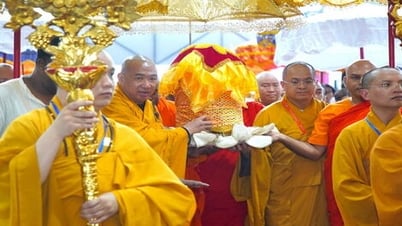

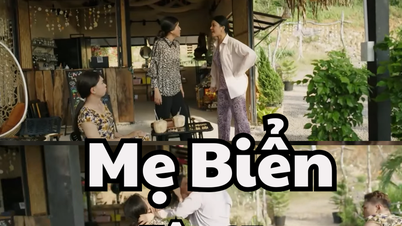





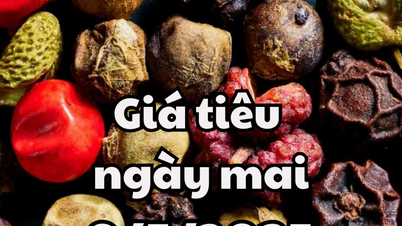

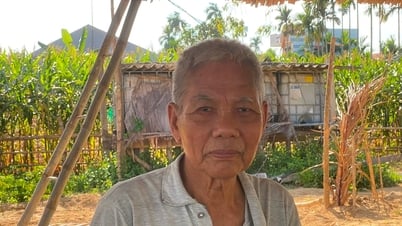




































![[Photo] Prime Minister Pham Minh Chinh talks on the phone with Singaporean Prime Minister Lawrence Wong](https://vphoto.vietnam.vn/thumb/402x226/vietnam/resource/IMAGE/2025/5/8/e2eab082d9bc4fc4a360b28fa0ab94de)















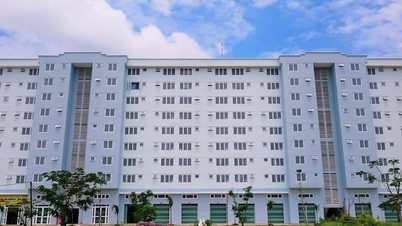












Comment (0)